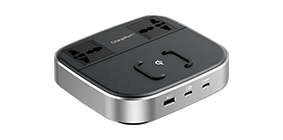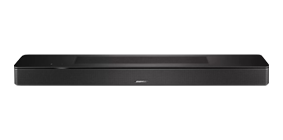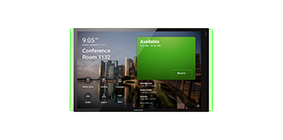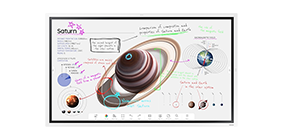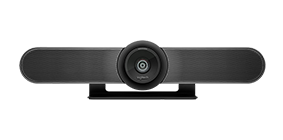- Learn
- 279 views

FF&E is an acronym that stands for Furniture, Fixtures, and Equipment. This term is commonly used in the architecture, interior design, and construction industries to describe the various movable objects and items that are included in a building or space.
- Furniture refers to the movable objects that are used to support various human activities such as seating, sleeping, and storage. (Examples of furniture items include sofas, chairs, tables, beds, dressers, and cabinets)
- Fixtures refer to the permanent components that are attached to a building or space, such as lighting fixtures, plumbing fixtures, and electrical fixtures. These items are typically installed during the construction phase and are not intended to be moved or removed easily.
- Equipment refers to the various tools, machinery, and appliances that are used in a building or space for a specific purpose. (Examples of equipment items include kitchen appliances, gym equipment, and audio-visual equipment)
Some people in the industry like to describe it like this: If you pick up a building and shake it, everything that falls out is FF&E.
FF&E items are an important aspect of any building or space, as they not only provide functionality but also contribute to the overall aesthetics and design of the space. In addition, FF&E items can also have an impact on the safety, comfort, and well-being of the occupants of the space.
When planning a construction or interior design project, it is important to consider the FF&E items that will be included and to budget accordingly. FF&E costs can vary widely depending on the size and complexity of the project, as well as the quality and quantity of the items being used.
That’s the high-level definition of FF&E. Now, let’s look at what it means for different people involved in the project.
The FF&E (Furniture, Fixtures, and Equipment) process is an essential component of any construction or interior design project, and it involves several stages, including planning, selection, procurement, delivery, and installation.
- Planning: The FF&E process starts with planning. This involves identifying the FF&E needs of the project, creating a budget, and establishing a timeline for procurement and installation. The client's needs and preferences, as well as the project's design concept, should be taken into account during this phase.
- Selection: The selection phase involves identifying and specifying the FF&E items needed for the project. The designer will work with the client to determine the design direction, and a preliminary list of FF&E items will be created. This list will be refined as the project progresses, and the final selection of FF&E items will be based on the project's budget, design concept, and functional requirements.
- Procurement: Once the FF&E items have been selected, the procurement phase begins. This involves issuing requests for proposals (RFPs) to vendors, reviewing proposals, and selecting vendors. The procurement process should include the negotiation of pricing and delivery terms, and the creation of purchase orders.
- Delivery: Once the FF&E items have been ordered, they will be delivered to the project site. The designer should coordinate with the vendors to ensure that the items are delivered at the appropriate time and that they are in good condition.
- Installation: The installation phase involves the placement and assembly of FF&E items in the project space. The designer should create a detailed installation plan that outlines the sequence of installation, the location of each item, and any necessary coordination with other trades. The installation plan should also take into account any special installation requirements, such as electrical or plumbing needs.
- Closeout: Once the FF&E items have been installed, the project is considered to be in the closeout phase. This involves a final walkthrough of the project space to ensure that all FF&E items have been installed correctly and are functioning as intended. Any deficiencies or issues should be documented, and the designer should work with the vendor to resolve them.
This may make it seem like the process of FF&E is linear: It can be, if you're working on single-family homes. In reality though, enterprise projects like international hotel brands or restaurant chains will require the FF&E process to be more of a circle.
This is because the process is repeated for each property and adhering to brand standards is a necessity. Additionally, commercial buildings require a lot more documentation for upkeep and turnover. That means turnover documents will ideally include information like what exact materials were used, where they were sourced, and when the HVAC system was last serviced.
That means having the ability to decide whether you will specify the same materials when it's time for a refresh or time to build a new location, based on how they performed during their lifetime. Information like supplier performance and relationships also come into play.
The FF&E process is a critical component of any construction or interior design project. It involves several stages, including planning, selection, procurement, delivery, installation, and closeout. A well-planned and executed FF&E process can help to ensure that the project is completed on time, within budget, and to the client's satisfaction.
An FF&E (Furniture, Fixtures, and Equipment) designer is a professional who specializes in selecting and specifying FF&E items for interior design projects. They work closely with architects, interior designers, and project managers to ensure that the FF&E items are functional, aesthetically pleasing, and within budget.
It's important to note that an FF&E designer is, depending on the company, interchangeable with a designer, interior designer, or FF&E manager. It all depends on their team structure.
The role of an FF&E designer may vary depending on the project, but typically, their responsibilities include:
- FF&E planning: An FF&E designer works with the design team to understand the project's requirements and create a plan for selecting and specifying FF&E items.
- FF&E selection: An FF&E designer selects FF&E items based on the project's requirements, budget, and design concept. They may also create custom pieces or modify existing items to fit the design concept.
- Specification: An FF&E designer specifies the materials, dimensions, and finishes for each FF&E item, ensuring that they meet the project's functional and aesthetic requirements.
- Budget management: An FF&E designer works with the project manager to manage the FF&E budget, ensuring that the project stays within budget while meeting the project's requirements.
- Procurement: An FF&E designer may be responsible for procuring FF&E items, which involves negotiating pricing and delivery terms, creating purchase orders, and managing the delivery and installation of FF&E items.
- Coordination: An FF&E designer works closely with other members of the design team, such as architects, interior designers, and contractors, to ensure that the FF&E items are integrated into the project seamlessly.
An FF&E designer is a specialized professional who plays a critical role in interior design projects. They are responsible for selecting and specifying FF&E items that meet the project's requirements while staying within budget and ensuring that they are installed correctly.
FF&E in the design and construction industry is constantly evolving, with trends and innovations shaping the way designers, procurement teams, and building owners manage FF&E.
One significant trend in FF&E is sustainability, as there is an increasing demand for eco-friendly and sustainable materials and products. This trend is driven by a growing awareness of the impact that construction and interior design have on the environment, and designers, procurement teams, and building owners are increasingly seeking out sustainable options for FF&E.
Another trend in FF&E is customization, with designers creating custom pieces or modifying existing items to fit the project's design concept. This trend is driven by a desire for unique and personalized design solutions that reflect the client's brand or personality.
The use of technology in FF&E specification and procurement is also a growing trend, with the development of digital tools and platforms that allow designers and procurement teams to visualize and manage FF&E items more efficiently. These tools can help to streamline the FF&E selection and procurement process, reducing costs and improving project efficiency.
In terms of managing FF&E, designers, procurement teams, and building owners are increasingly focused on reducing costs while maintaining quality and ensuring timely delivery. This requires effective budget management, negotiating with vendors for competitive pricing, and carefully managing the procurement and installation process to minimize delays.
Overall, the current state of FF&E is characterized by a focus on sustainability, customization, and the use of technology to streamline the selection and procurement process. Designers, procurement teams, and building owners are working to manage FF&E efficiently while maintaining quality and meeting the project's requirements.
To “outsiders,” we sometimes liken FF&E specification to baseball: Both are super complicated versions of extremely basic activities. In other words, baseball is to tag as FF&E specification is to writing grocery lists.
Obviously, that’s a gross oversimplification. Specifying FF&E involves identifying and selecting the appropriate items for a project, and specifying their details to ensure they meet the project's requirements.
Project requirements for FF&E often involve basic elements like size and color. More specific stipulations can include brand standards and environmental sustainability.
Here are some best practices for specifying FF&E:
- Understand the project requirements: Before specifying FF&E, it is crucial to understand the project's functional and aesthetic requirements, as well as the budget and timeline.
- Create brand standards: Brand standards make it easy to for all your locations to look and feel consistent. Ironically, it's also what makes it possible for each of your locations to take on local culture within your brand's guidelines. And finally, brand standards crystalize the values and distinct voice that you want your guests to experience.
- Use templates: Enterprise projects are all about repetition (while making space for "local flavor"). You will save a massive number of hours if you don't have to start from scratch every time. Besides, templates ensure that none of the routine items get left out (who else hates when that happens?). Regularly updated templates will also be a reflection of lessons your team has learned along the way.
- Research products and suppliers: Conduct research on available products and suppliers, and compare pricing, quality, and lead times.
- Create detailed specifications: Create detailed specifications for each FF&E item, including the product description, dimensions, materials, finishes, and any other relevant details. The specifications should be clear and comprehensive, leaving no room for interpretation.
- Consider sustainability: When specifying FF&E, consider sustainable options, such as products made from recycled materials, sustainable sourcing practices, or products that can be recycled at the end of their life.
- Verify compliance with regulations: Ensure that the specified FF&E items comply with relevant regulations, such as safety, accessibility, or environmental regulations.
- Consult with the design team: Consult with the design team to ensure that the specified FF&E items meet the project's design intent and aesthetics.
- Ensure quality control: Establish quality control processes to ensure that the specified FF&E items meet the project's quality standards, and perform inspections during the manufacturing and delivery process.
- Keep track of costs: Keep track of the costs associated with each FF&E item, and monitor the budget to ensure that costs do not exceed the allotted budget.
- Plan for delivery and installation: Plan for the delivery and installation of the FF&E items, ensuring that they are delivered on time and installed correctly.
By following these best practices for specifying FF&E, designers and procurement teams can ensure that the selected items meet the project's requirements, are delivered on time and on budget, and meet the desired level of quality.
In overly simplified terms, FF&E procurement simply means purchasing.
Of course, nothing is ever as simple as we want it to be.
Procuring FF&E involves acquiring the specified items and ensuring their delivery and installation on the project site. Before we ever get to the purchasing part though, we need to find the right suppliers.
Here are some best practices for FF&E procurement:
- Develop a procurement plan: Develop a detailed procurement plan that outlines the timeline, budget, and roles and responsibilities of the procurement team.
- Collaborate: Tell me if you've heard this before: Spec sheets get sent over email. You have to download attachments that range from PDF, Excel, and Word. Then, you have to type in (okaaayyyy, copy and paste for you fancy-pantsies) all that information into your procurement software.
- Conduct a competitive bidding process: Solicit bids from multiple suppliers and compare pricing, quality, and delivery timelines to ensure that the best value is obtained for each item.
- Verify supplier qualifications: Verify the qualifications of potential suppliers, such as their experience, financial stability, and certifications.
- Negotiate pricing and terms: Negotiate pricing and terms with suppliers to obtain the best possible value and establish clear terms and conditions for payment, delivery, and installation.
- Establish clear communication channels: Establish clear communication channels with suppliers to ensure that information flows smoothly between the procurement team and the supplier throughout the procurement process.
- Establish quality control procedures: Establish quality control procedures to ensure that the received FF&E items meet the project's quality standards, and perform inspections upon delivery and installation.
- Manage delivery and installation: Manage the delivery and installation of FF&E items, ensuring that they are delivered on time and installed correctly, and that any issues or damages are promptly addressed.
- Monitor project budget: Monitor the budget to ensure that the Procurement costs stay within the allotted budget, and adjust procurement decisions as needed to keep the project on track.
An FF&E (Furniture, Fixtures, and Equipment) reserve is a budget allocation set aside for unexpected costs or additional items that may arise during a project's FF&E procurement process. The FF&E reserve provides a cushion for any unexpected expenses or last-minute changes to the project scope.
Here are some best practices for FF&E reserve:
- Determine the appropriate amount: Determine the appropriate amount of FF&E reserve by considering the project's overall budget, the complexity of the FF&E procurement process, and the potential for unexpected expenses.
- Communicate the FF&E reserve to all stakeholders: Ensure that all stakeholders, including the design team, procurement team, and building owner, are aware of the FF&E reserve and its purpose.
- Allocate the reserve budget carefully: Allocate the FF&E reserve budget carefully, ensuring that it is used only for unexpected expenses or additional items that are truly necessary for the project's success.
- Document all FF&E reserve expenses: Document all expenses related to the FF&E reserve, including any unexpected costs or additional items procured, to ensure that a clear record is maintained for future reference.
- Reassess the FF&E reserve periodically: Reassess the FF&E reserve periodically throughout the project's procurement process to ensure that the amount remains appropriate based on any changes to the project scope or budget.
- Plan for the use of the FF&E reserve: Plan for the use of the FF&E reserve in advance, identifying potential areas where unexpected expenses or additional items may arise.
By following these best practices for FF&E reserve, stakeholders can ensure that unexpected expenses or last-minute changes to the project scope do not negatively impact the project's budget or timeline, ultimately leading to a successful project outcome.
Organizing FF&E (Furniture, Fixtures, and Equipment) materials and product data is crucial to ensure that the correct items are specified, procured, and installed on a project.
Here are some best practices for organizing FF&E:
- Develop a system for categorizing FF&E items: Develop a system for categorizing FF&E items based on their type, location, or function to facilitate easy access and retrieval.
- Create a centralized FF&E database: Create a centralized database that includes all FF&E data, such as item descriptions, specifications, pricing, and suppliers, to ensure that all stakeholders have access to accurate and up-to-date information.
- Utilize a cloud-based project management software: Utilize a cloud-based project management software that allows stakeholders to access and update FF&E data from anywhere, in real-time, ensuring that everyone is working with the latest information.
- Develop a naming convention: Develop a naming convention for FF&E items that is consistent across all items, making it easy to search and find specific items in the database.
- Keep data up to date: Regularly update the FF&E database to ensure that all data is accurate and up to date, including item descriptions, specifications, pricing, and supplier information.
- Document changes and updates: Document all changes and updates to the FF&E data to ensure that a clear record is maintained for future reference.
- Assign responsibility for updating FF&E data: Assign responsibility for updating the FF&E data to specific individuals or teams, ensuring that there is accountability for keeping the data up to date.
By following these best practices for organizing and keeping FF&E data up to date, stakeholders can ensure that the correct items are specified, procured, and installed on a project, reducing the risk of errors or delays in the project timeline, ultimately leading to a successful project outcome.
Keeping FF&E (Furniture, Fixtures, and Equipment) product information up to date can be a challenging task, but there are several ways to make it easier:
- Use digital tools: Utilize digital tools such as online product catalogs, databases, and project management software that provide real-time updates on product information. This can help reduce the need for manual updates and ensure that the data is always accurate and up to date.
- Partner with suppliers: Work with suppliers who have online portals or automated systems that update product information in real-time. This can help reduce the time and effort required to manually update the information.
- Develop a system for updating information: Develop a system for updating FF&E product information that is consistent and easy to follow. This can include assigning responsibility for specific tasks, setting deadlines for updates, and utilizing templates to ensure consistency.
- Regularly review and update information: Set a schedule for reviewing and updating FF&E product information, such as quarterly or bi-annually. This can help ensure that the information is always accurate and up to date.
- Document changes and updates: Document all changes and updates to FF&E product information, including when they were made and who made them. This can help ensure that a clear record is maintained for future reference.
By implementing these strategies, stakeholders can streamline the process of keeping FF&E product information up to date, reducing the risk of errors or delays in the project timeline, ultimately leading to a successful project outcome.





